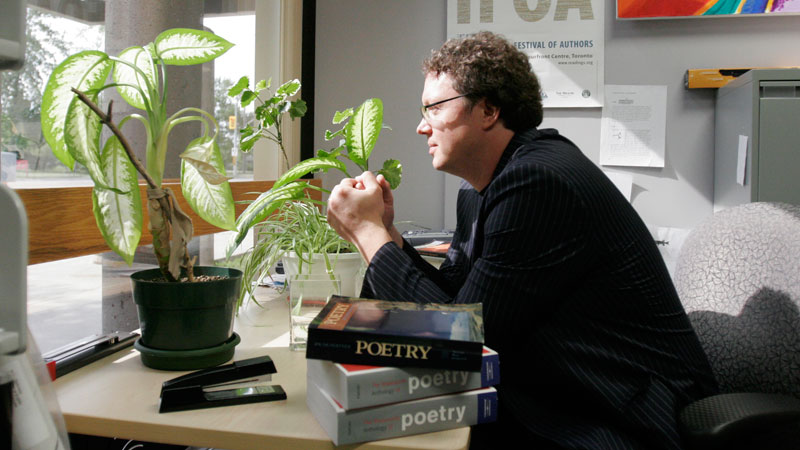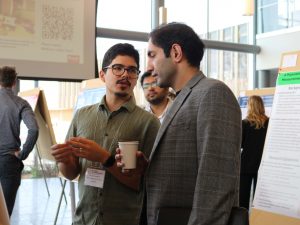
Adam Dickinson
When Adam Dickinson speaks of a body of writing, he’s talking about much more than words on a page.
The associate professor of English Language and Literature marries creativity in poetry with scholarship on the genre by writing about the impact of the environment on the human body – specifically his own.
The work has earned Dickinson not one, but two Social Sciences and Humanities Research Council grants this year.
In the category of Research/Creation in the Fine Arts, Dickinson received $60,000 for the three-year project “Anatomic: Semiotic Bodies, Chemical Environments.” In the Standard Research Grant category, he received $13,568 for the one-year project “Poetry as Science, Science as Poetry: Pataphysics, Biosemiotics, and Postmodern Environments.”
The two projects represent diverse directions related to the same end: creative expression through poetry on the one hand, and scholarly inquiry on the other. Both are directed at making sense of environmental concerns in our modern world.
 With the three-year project, Dickinson will expose his own body to the disciplines of science and medicine to engage in a form of poetry called pataphysics. Pataphysics uses a scientific approach when it comes to method and composition. By putting specific constraints on the research, it allows the researcher to get at new meanings.
With the three-year project, Dickinson will expose his own body to the disciplines of science and medicine to engage in a form of poetry called pataphysics. Pataphysics uses a scientific approach when it comes to method and composition. By putting specific constraints on the research, it allows the researcher to get at new meanings.
Dickinson will undergo blood and urine tests, microbial screening, and research into his own allergic reactions and inevitable viral infections to determine what toxic and microbial elements are impacting his body.
His research aims to help us understand how synthetic chemicals impact our bodies medically and culturally.
“My aim is to complicate distinctions between nature and culture, human and nonhuman, and pollution and purity by reframing the body as a being overwritten by toxic chemicals yet constantly subject to the semiotic interference of other microbial life forms,” Dickinson said.
Besides the poetry project, he will also spend the next year researching and writing a scholarly text on the implications of pataphysics and biosemiotics for an emerging environmental literary criticism. If pataphysics is poetry that imagines itself as science, biosemiotics can be considered to be science concerned with the semiotic resources of poetry.
Biosemiotics, an emerging field in biology, proposes the centrality of the “semiosphere” (or the world of signs and signification) over the biosphere. By emphasizing that biological life is the result of sign processes, it underscores the interpretive agency of membrane structures, as well as the link between a rich ecological world and a rich semiotic world.
The research will focus on writers not normally considered to be environmental writers. Their unusual translation procedures, techniques, and in some cases writing at the genetic level all work to reveal how different creatures and landscapes signify in diverse and potentially neglected ways.
“We often fail to care about things that do not signify for us,” he said. “A postmodern ecocriticism informed by pataphysics and biosemiotics offers new ways of understanding what matters.”
Dickinson, who joined Brock’s English department in 2006, said he is grateful for the support he receives from his colleagues. It allows him to pursue creative, scholarly and teaching goals in his daily work.
Graduate students will assist with research on both projects.









